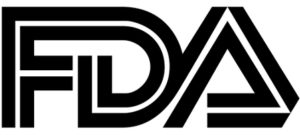 Information reviewed by the FDA, indicates that when magnetic resonance angiography (MRA) is performed on patients implanted with neurovascular embolisation coils containing 304V stainlesss steel (either as part of the coil implant itself, or left behind as part of the detachment process), the images may contain larger than expected MR artifact, or image voids when compared to other metals. In these cases, the reduced quality of the MRA image from increased artifact can result in inaccurate clinical diagnoses (e.g. occlusion status) and subsequent inappropriate medical decisions.
Information reviewed by the FDA, indicates that when magnetic resonance angiography (MRA) is performed on patients implanted with neurovascular embolisation coils containing 304V stainlesss steel (either as part of the coil implant itself, or left behind as part of the detachment process), the images may contain larger than expected MR artifact, or image voids when compared to other metals. In these cases, the reduced quality of the MRA image from increased artifact can result in inaccurate clinical diagnoses (e.g. occlusion status) and subsequent inappropriate medical decisions.
The FDA will continue to monitor this situation and will update this communication if significant new information becomes available.
Most neurovascular embolisation coils currently on the market are labelled as Magnetic Resonance (MR) Conditional. The MR Conditional information in the product labelling conveys to the user the conditions of safe use of the device when scanned within an MR environment. The product labelling for neurovascular embolisation coils does not currently convey the extent of MRA image artifact caused by the device or the MRA imaging parameters that will yield the lowest amount of image artifact if MRA is used for patient follow-up.
The FDA recommends that health care providers:
- Be aware of the presence of 304V stainless steel in the coil system(s) typically used (either as part of the coil implant itself, or left behind as part of the detachment process). If uncertain, the applicable device manufacturer should be contacted for information about the coil, its detachment mechanism, and any specific recommendations regarding the use of MRA with their product.
- Understand that 304V stainless steel-containing embolisation coil systems may increase image artifact on MRA exams performed at the time of aneurysm follow-up. In these situations, X-ray based digital subtraction angiography should be considered.
- If choosing to use MRA for follow-up, utilise optimal imaging parameters to minimise image artifact, including:
- Shortest echo times
- High readout bandwidth
In addition, ensure that the MRI system at your site meets all conditions provided in the MRI conditional labelling of the coil system (e.g., magnetic field strength in units of Tesla).













